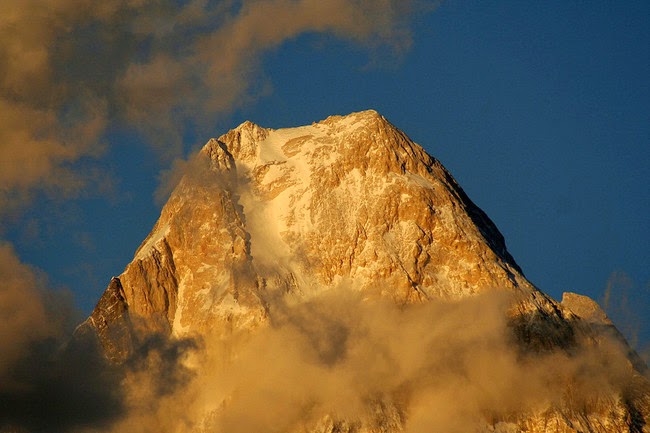 |
| Gasherbrum IV |
 |
| Gasherbrum IV |
The impressive mountain is the first of the "big ones" you can see when walking in towards the Baltoro area. It's located at the intersection where the Baltoro glacier splits and Gasherbum IV is really looming over everything around. There are two main attack routes. One is directly from relatively low altitude from the Baltoro glacier and the other one is from the huge glacier fields close to camp one of Gasherbrum I, II and III.
Contrary to general belief Gasherbrum doesn't mean "shining wall". The name comes from the Balti words rgasha, which means beautiful and brum which means mountain. The other five peaks are close by and three (I, II, III) of them are slightly higher at 8068m, 8032m and 7952m respectively. Gasherbrum IV is ranked as number 17 on the list of the world's highest mountains. The first westerners to see the peak from the upper reaches of the Gasherbrum glacier was famous explorer Francis Younghusband and his party when they in 1889 explored the area.
A handful attempts have been made and very few have resulted in success. The first ascent was made in 1958 by a strong Italian team led by legendary climber Riccardo Cassin. The route went along the NE ridge where they encountered a lot of hard technical climbing as well as snow storms. Only two members of the team reached the summit; Walter Bonatti and Carlo Mauri. On the descent they encountered another blizzard and had to spend the night in C6 at almost 7700m. The way down to C5 at 7200m was very technical and dangerous and it was a really close call for Giuseppi de Francesch when he almost fell to his death.

0 comments:
Post a Comment